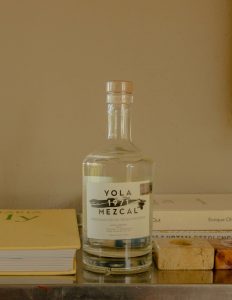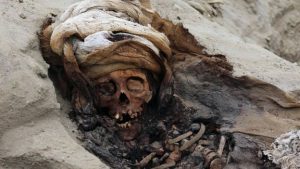On Friday, September 6th, Class began with another quick overview of the Primary Source Essay, due on Moodle at the beginning of class next Friday, where Professor Holt reiterated the usefulness of Zotero (For The College of Wooster’s guide to Zotero, Click Here: http://libguides.wooster.edu/zotero). Primary source was also a key term to define in preparation for class today, defined as a source written or collected by someone who experienced it first hand.
Next, we heard from Mia who presented her piece of Latin American News, an article centered around a culturally-rooted mezcal distilling and distributing operation, Yola Mezcal, headed by three diverse women. She explained the family roots of the company, beginning with the grandfather of the article’s featured partner, Yola Jimenez, who had a passion for growing agave and distilling mezcal in the region of Mexico known as Oaxaca. Mia drew a connection between that region being the area that Díaz was from. The familial culture of the region, centered around mezcal offered context to the kind of people that Diaz originated from, as well as how their unique culture shaped his experience and his views. Particularly on a day in which we spoke about the importance of soldaderas in the Mexican Revolution, it was refreshing to hear an article about a successful company run by women. Mia noted that there was more of a discussion around cultural significance on the Yola Mezcal website, which you can visit at: http://www.yolamezcal.com.
Following the presentation, we were shown clips from a film called “The Storm that Swept Mexico” You can watch it again through a blog post of Professor Holts that contains the video (https://larev2019.voices.wooster.edu/2019/09/05/the-storm-that-swept-mexico/). Professor Holt explained that she liked the documentary as it included not just European or American historians, but included several Latin American historians, and left it as a bilingual documentary, only providing subtitles and not dubbing over the speakers. The first clip, around the 20-minute mark, discussed Villa and Zapata, the similarities between them despite their rivalries, largely rooted in the cultural differences from the regions where they lived. Both desired land and agrarian reform, but the context for which they desired that to happen was very different. Zapata who was from the south, pushed for communal land reforms, believing in the power of the community, whereas Villa, who came from the north had very individualistic ideas, and desired a weak central government. This highlights the role that regionalism had in the Mexican Revolution as well as the way that definitions of “justice” in the context of revolutionizing a country can vary from town to town.
Many of the soldiers who were fighting were young, and those with ranching backgrounds transitioned into cavalry quite easily, Villa was touted as something of a military mastermind, but at the root of it, he was a charismatic risk-taker. He made good use of the railroad system and with this ability to travel quickly, meant that it was easier to transport more people, and from this logistical success, the concept of the soldadera was born. Now the men fighting could bring along their wives and families and thus had someone too cook for and care for them, not to mention many of the women who took up arms and helped during the actual battles. Soldaderas was one of the key terms discussed in class and are described as, women who took up arms and participated in the Mexican Revolution. Many followed their men into battle as their ‘caretakers’.
During group discussion, we talked about the soldaderas at length, questioning whether they were defined as the caretakers or the women who actually fought in the war. The question of an anti-feminist narrative was also brought up, if we neglect the women who aided in caring for the soldiers in turn for favoring the women who actually fought, is placing more value on the women fighting in an of itself an anti-feminist claim as it devalues the roles women played in other aspects of the war? How can we define their roles without incidentally devaluing the other? We found it interesting that despite the many articles we read about soldiers in our reading before class, there was next to no accounts of the women who took up arms and only seemed to present soldaderas from the caretaker perspective. Which brought up other primary sources, as while there may not be many written sources about it, there are certainly photographs. To wrap up our discussion on soldaderas, we emphasized the adaptability of these women, who left their homes to care for or fight alongside the men, and their self-preservationist attitude in making sure they succeeded in keeping themselves alive.
Questions:
How can we define soldadera to encompass the roles that all women played, while still giving each aspect the respect and recognition they require?
Define regionalism and the role that it played in the reforms demanded by revolutionaries.
How does the treatment of the soldaderas depict the culture and gender roles of the time?



